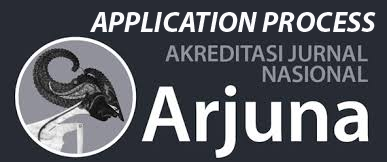Environmental determinants of the incidence of stunting in the working area of the Tempino Health Centre, Mestong District, Muaro Jambi Regency, 2024
DOI:
https://doi.org/10.55606/ijmh.v3i4.4682Keywords:
stunting, enviromental sanitasi, factorAbstract
Stunting is a condition where a child's body size is not appropriate for their age. The consequences of malnutrition, infection, and poor social life can have long-term impacts, such as depression, loss of cognitive and mental functions. The prevalence of stunting in the Tempino Health Center Working Area in 2023 was 2.63%. This study aims to determine the relationship between environmental sanitation and the incidence of stunting in the Tempino Community Health Center Working Area, Mestong District, Muaro Jambi Regency This type of quantitative research with a case control design. The population was 100 and the sample size was 66 respondents with a ratio of 1: 1 taken with the Total Sampling technique. There is a significant relationship between the physical quality of clean water (P-Value = 0.000; (OR) = 12.880), household wastewater disposal system (P-Value = 0.003; (OR) = 5.714), latrine building (P-Value = 0.003; (OR) = 5.333) with the incidence of stunting. There was no association between household waste bins (P-Value = 0.573 (OR) = 0.619 (0.203-1.892), hand washing with soap (P-Value = 0.240; OR) = 0.411) with the incidence of stunting among children under five.
References
Kesehatan Kementerian. (2023). Mengenal lebih jauh tentang stunting. Retrieved from https://yankes.kemkes.go.id
Khoirun Nisa, D. M., & Sukesi, T. W. (2022). Hubungan antara kesehatan lingkungan dengan kejadian stunting di wilayah Puskesmas Kalasan Kabupaten Sleman. Jurnal Kesehatan Lingkungan Indonesia, 21(2), 219–224.
Palillingan, R. A. (2020). Konsep dan prinsip dasar kesehatan lingkungan.
Permenkes. (2014). Peraturan Menteri Kesehatan Republik Indonesia Nomor 3 Tahun 2014 tentang Sanitasi Total Berbasis Masyarakat.
Permenkes. (2024). Peraturan Menteri Kesehatan Republik Indonesia Nomor 2 Tahun 2023 tentang Peraturan Pemerintah Nomor 66/69 Tahun 2014 tentang Kesehatan Lingkungan.
Purnama, G. S. (2017). Dasar-dasar kesehatan lingkungan. Program Studi Kesehatan Masyarakat, Fakultas Kedokteran, Universitas Udayana.
Rahayu, A., Rahman, F., Marlinae, L., Husaini, Meitria, & Yulidasari, F., et al. (2018). Buku ajar gizi 1000 hari pertama kehidupan. Penerbit CV Mine.
Rismawatiningsih, W., Vita, C., Purba, G., Warlenda, S. V., Desfita, S., & Zaman, M. K., et al. (2023). Hubungan faktor sanitasi lingkungan dan personal hygiene dengan kejadian stunting pada balita di wilayah kerja Puskesmas Rejosari Pekanbaru tahun 2022.
Soraya, S., Ilham, I., & Hariyanto, H. (2022). Kajian sanitasi lingkungan terhadap kejadian stunting di wilayah kerja Puskesmas Simpang Tuan Kabupaten Tanjung Jabung Timur. Jurnal Pembangunan Berkelanjutan, 5(2), 98–114.
Studi P., Masyarakat, K., Kedokteran, F., & Udayana, U. (2017). Dasar-dasar kesehatan lingkungan.
Ummah, M. S. (2019). Dasar kesehatan lingkungan. Sustainability (Switzerland), 11, 1–14. Retrieved from https://scioteca.caf.com
UNICEF. (2019). UNICEF-WHO-The World Bank: Joint child malnutrition estimates - Levels and trends.
World Health Organization. (2021). Environmental health.
Yayasan Kesehatan. (2022). Ciri anak stunting. Kementerian Kesehatan RI.
Yayasan Kesehatan. (2022). Ciri anak stunting. Kementerian Kesehatan RI.
Yuniastuti, A., Hidayah, I., Susanti, R., & Pratikwo, S. (2024). Hubungan faktor sanitasi lingkungan dengan kejadian stunting pada balita usia 6–59 bulan di Kota Pekalongan tahun 2023. Jurnal Litbang Kota Pekalongan, 22(1), 28–35.
Downloads
Published
Issue
Section
License
Copyright (c) 2024 International Journal of Medicine and Health

This work is licensed under a Creative Commons Attribution-ShareAlike 4.0 International License.






